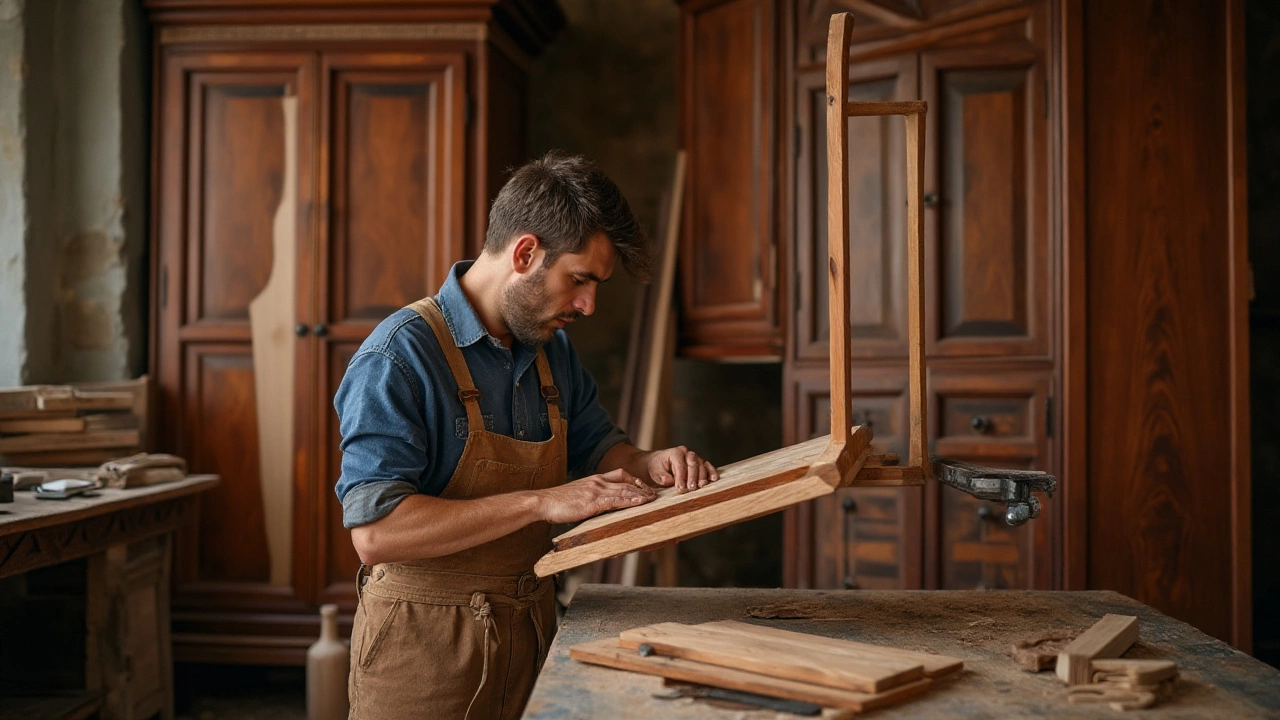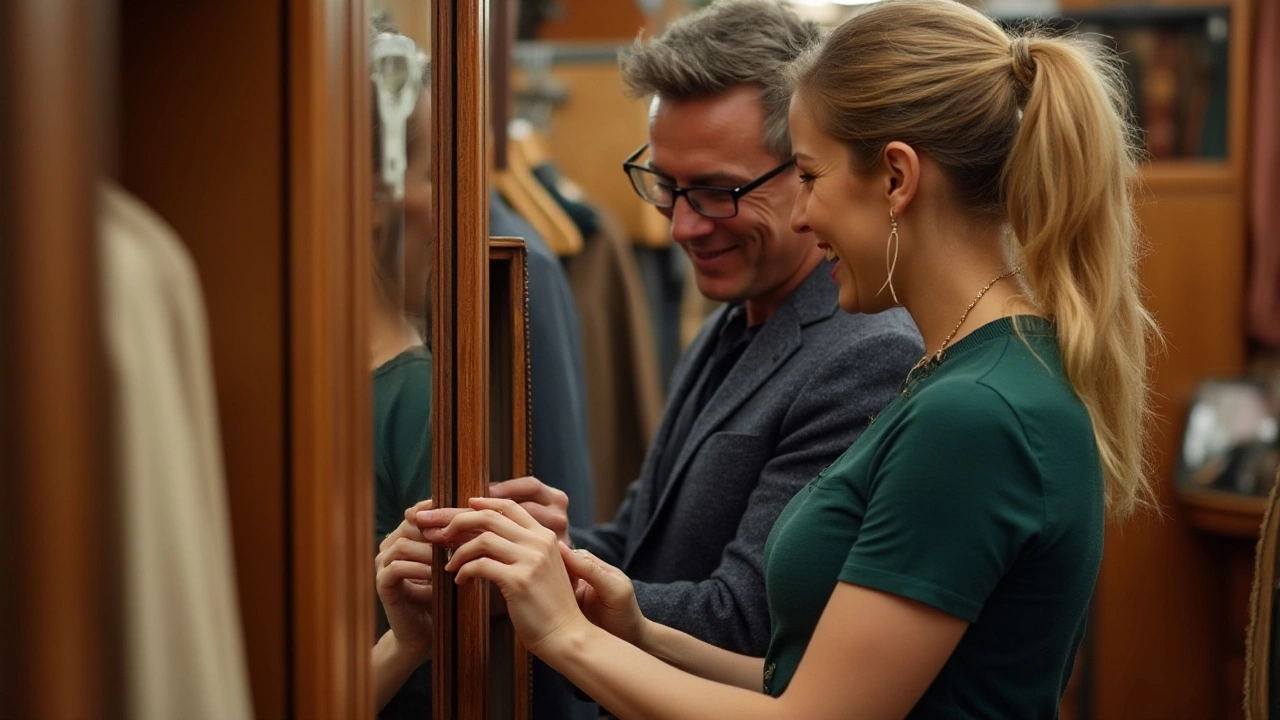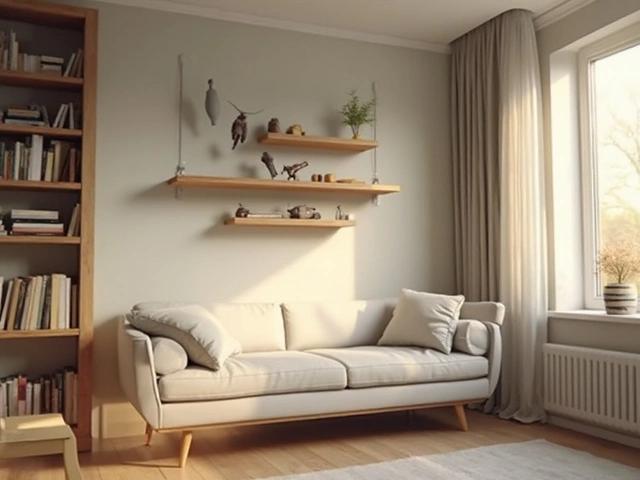 24
Nov,2024
24
Nov,2024
Have you ever walked into a furniture store, taken a look at a wardrobe you loved, only to reel back at the price tag? You're not alone. Understanding why wardrobes carry such hefty price tags requires diving into the world of materials, craftsmanship, and design.
Quality materials are often the first culprit. Beautiful oaks, rich walnut, and even eco-friendly materials don't come cheap. Each type not only affects the overall aesthetics but also durability.
Beyond materials, the craftsmanship behind these pieces can add significantly to their cost. An expertly crafted wardrobe may require skilled labor, which comes at a premium.
Design plays a crucial role too. Whether it’s sleek minimalism or opulent traditional styles, what often captivates your eye also causes price hikes. Customization pushes this even further.
Lastly, by understanding current market trends and pricing insights, buyers can navigate through their options smartly, ensuring they get the best bang for their buck without compromising on style.
Material Quality
When it comes to the pricing of wardrobes, material quality plays a significant role. What many might not realize while browsing through furniture catalogs is that the choice of materials could tremendously influence both price and longevity. Take, for instance, solid hardwoods like oak, walnut, and mahogany. These materials are often synonymous with luxury due to their durability, aesthetic appeal, and rarity. Given their slow growth rate, hardwood trees are considered a bonus in craftsmanship, translating directly into costlier wardrobes. Additionally, these woods can be sturdier and more resistant to damage, which justifies their place in high-end market segments.
Conversely, there's engineered wood, a more budget-friendly alternative. Yet, even here, the layered veneer finish and the wood grain pattern can add costs, especially when aiming to mimic the appearance of natural hardwood. Certain materials, like sustainably-sourced bamboo, are becoming popular for their eco-friendly aspects. While cheaper than hardwood, these materials may still command a higher price, given the sustainability factor. "The enrichment that good material offers doesn’t only enhance the furniture’s life but also enriches the living space aesthetically," notes renowned designer Charles Eames, underlining the intrinsic value that materials bring to wardrobe pricing.
One can often find wardrobes with metal accents or glass inlays, adding elegance and sometimes functionality – think along the lines of mirrored doors that serve to open up space in smaller rooms. Yet, these too ramp up production costs, considering the precision needed in manufacture and installation. Metal, especially when paired with wood as hinge or drawer pulls, adds not only a contrasting texture but also structural integrity. A wardrobe with premium material might feature a cedar interior, bringing with it the natural repellant properties against moths and a pleasant aroma. Junior budget wardrobes typically lack such features, emphasizing why material components are crucial considerations in the pricing spectrum.
Here’s a handy comparison of materials often utilized and their typical price impacts:
| Material | Impact on Pricing |
|---|---|
| Solid Oak | High |
| Engineered Wood | Moderate |
| Bamboo | Varies |
| Metal Inlays | High |
Thus, potential buyers should pay attention not merely to the type of wood, but also to related materials that constitute a wardrobe. As each type bears its distinct characteristics and price effects, consumers are better informed by understanding these material differences, ensuring their investment not only aligns with their budgets but also meets expectations in terms of quality and life span.

Craftsmanship and Labor
Understanding the high cost of wardrobes inevitably leads us to the realm of craftsmanship and labor. These are pivotal elements that often dictate not just the durability of the piece, but also its price. When you purchase a wardrobe, you're not merely buying a piece of furniture; you're investing in the hours of skilled work it took to shape raw materials into a cohesive and beautiful piece. Many top-quality wardrobes are crafted by artisans who have honed their skills over years, even decades. Such mastery doesn't come quickly, nor does it come cheaply. For instance, when carpenters select wood for making a wardrobe, they don't just consider its appearance. The grain, texture, and strength directly influence the complexity of the build. This intricate work requires a level of precision that machines alone can't achieve, which is why human labor remains crucial.
Artisanship in wardrobe crafting often involves unique hand-finishing techniques that add unparalleled value to the furniture. Unlike machine finishes that tend to look uniform and lack character, hand-finishing gives each piece an individual charm that can instantly transform a room's aesthetic. Techniques such as hand-rubbing oils or adding patinas are labor-intensive, adding layers of depth and richness to the wardrobe. Such methods are tied to tradition, some dating back centuries, ensuring that each piece is not just a product but a continuation of art forms passed down through generations. In Europe, for example, some craftsmen still use techniques that were developed in ancient times, venerating the old methods alongside modern technology. The value they bring lies not in the speed of production, but in the care and detail they pour into each wardrobe.
The involvement of skilled labor also means that the quality control is significantly higher in wardrobes produced by expert hands. Every joint is inspected, every panel is aligned, meeting rigorous standards that mass-produced pieces often bypass. This careful examination ensures that the wardrobes you invest in will stand the test of time, enduring years of use without succumbing to warping or weakening. An artisan's reputation hinges on the quality of his work, a factor that guarantees close attention to detail is invested in every step of the crafting process. Such artisans take personal pride in their work, which translates into durable and exquisite wardrobes, justifying the costs associated.
It's interesting to note how the fashion and furniture industries parallel in their reliance on human skill and tradition. Just as an haute couture dress involves bespoke tailoring that no machine can replicate, a top-tier wardrobe exhibits nuances that only human expertise can deliver.
One renowned craftsman once said, "Each piece tells a story of where it came from — every mark a testament to its maker's journey." This personal investment adds invaluable depth and meaning, making your wardrobe more than just storage space but a narrative piece of art.In some regions, especially those with rich woodworking heritages like Italy or Japan, people often place as much cultural value on a handcrafted wardrobe as we might on a sculpture or painting. Thus, you're not just paying for labor; you're paying for the preservation of artisanal histories and stories, kept alive through each stroke of a craftsman's hand.

Design and Customization
When diving into the realm of wardrobe design, it becomes clear that aesthetics and functionality are intertwined in creating these fascinating furniture pieces. The design of a wardrobe is more than just its visual appeal; it's about maximizing space, ensuring accessibility, and reflecting personal style. Designers today are constantly pushing the envelope, merging modern minimalism with timeless classics, to offer pieces that promise to stand out in any room while serving practical purposes.
Customization plays a crucial role in the pricing dynamics of wardrobes. Many buyers prefer to have a say in features like the number of shelves, the kind of hangers, or even hidden compartments specifically tailored to their wardrobe needs. This bespoke approach demands not only more resources but also personalized attention from skilled artisans, driving up costs. The level of personalization available in wardrobe design today is a nod to the increasing demand for flexibility and individuality in furniture choices. A consumer's desire to integrate unique elements, from intricate wood carvings to specialized lighting features, can significantly influence the purchase price.
In this creative fusion of function and art, wardrobe designers often leverage insights from market research to stay ahead of trends. According to a 2022 survey by the Furniture Society, over 60% of consumers emphasized the importance of custom options in influencing their buying decisions.
"Design isn't just what it looks like and feels like. Design is how it works," famously said Steve Jobs, capturing the essence of practicality intertwined with aesthetics that applies aptly to wardrobes.It’s this blend of form and function that makes certain wardrobes highly desirable and, naturally, more expensive.
To cater to diverse tastes, many brands offer modular wardrobe systems that allow users to piece together their storage solutions. This format not only gives customers control over their furniture footprint but also educates them on designing smart spaces. For instance, a wardrobe could feature a collapsible ironing board, a full mirror interior, or even a charging dock for gadgets—each addition crafted for adding value and demanding expertise.
Significantly, the materials involved in these designs contribute more than just economically; they set the industry standards and customer expectations. For instance, sustainable materials and eco-friendly finishes might be pricier but align with modern buyers who value environmental responsibility. Detailed craftsmanship, from dovetail joints to hand-painted motifs, honors traditional methods while embracing contemporary needs, creating a tapestry of past and present influences that resonate with discerning buyers. Therefore, while the initial cost of a customized wardrobe might seem steep, the lifetime value it offers through tailored functionality and style often justifies the investment.

Market Trends and Tips
Understanding the current market trends is key to making wise decisions when investing in a wardrobe. Today’s consumers are increasingly leaning toward sustainable and eco-friendly options. The embrace of sustainability is not just a passing fad but a significant shift in how people approach home furnishing. Many wardrobe manufacturers are responding by offering products made from recycled or sustainably sourced materials. This not only appeals to environmentally-conscious shoppers but also often involves higher production costs due to the sourcing and processes required to maintain ecological standards. As the demand for green furniture grows, prices can be expected to reflect the premium of these sustainable practices.
Another trend influencing wardrobe pricing is the rise of digital tools in shopping. Virtual reality and augmented reality technologies are becoming popular among retailers, allowing consumers to visualize furniture in their homes before making a purchase. This tech integration can sometimes push prices up due to development costs but offers immense value by reducing the risk of buyer’s remorse. There is also an evident shift towards customization. Consumers these days love the idea of a wardrobe tailored to their specific needs and style preferences. This customization trend lets them select dimensions, finishes, and storage solutions tailored to their lifestyle, but naturally, these bespoke options come at a premium.
When it comes to tips for purchasing your ideal wardrobe without breaking the bank, being informed is your best asset. Start by doing thorough online research. Compare prices across various platforms, both online and offline, to avoid overpaying. Checking customer reviews can also provide insights into the quality and durability of the item you are considering. Consider buying during sales events such as Black Friday or end-of-season sales. Retailers often offer significant discounts during these periods. Additionally, second-hand options can sometimes lead to unique finds at a fraction of the cost, making vintage pieces not only stylish but also economical. For some, even building a wardrobe could be an alternative; many online guides and kits allow handy folks to craft their own piece at a reduced cost.
Keeping an eye on the latest trends and knowing a few smart purchasing strategies can ensure that your next wardrobe purchase is both cost-effective and fits right into the aesthetic appeal of your living space. As the famous designer William Morris once said,
"Have nothing in your houses that you do not know to be useful or believe to be beautiful."This quote beautifully encapsulates the balance we're often striving for in furnishing homes today—functionality paired with visual delight, at a price that feels just right.




